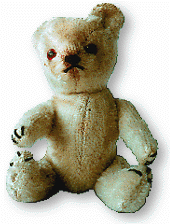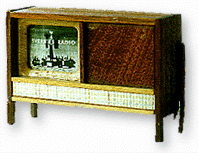|
The texts from the back covers of pornographic
films we quote in this pamphlet are all taken from films that
are distributed in ordinary video rental stores, not from specific porn shops.
"Everyone who's turned 50 knows what it's like. Seeing
all these little teenage girls with their young, turned-up tits
and knowing that it is 'look but don't touch'.
But Randy is a schoolmaster and
knows how to use his position. The cute girls might not want
to sleep with the old man at all, but they have to if they want
to stay on at school..."
From the back-cover of the porn film
"Schoolmaster's Little Girl".
The
price of Freedom of Speach and Freedom of the Press is that we have
to accept some improper or tasteless phenomena. – And you are
not opposing the Freedom of the Press, are you?


In
1971
the old "Violation of Discipline
and Morality" Act was abolished in Sweden. Pornography fell
within the range of that act. In 1965 a committee had been appointed
to make an official report about "The
Limits of Freedom of Speach". The conclusion of the
report was that the act should be scrapped, but that nonetheless
there should be a limit. That limit was to be drawn at child abuse
and brutal violence. The report was referred to thirtyseven different
authorities for consideration, twentyseven of which supported the
proposal about a limit. Only ten of them wanted to abolish all limits (5).
Only ten of them wanted to abolish all limits (5).
The committee which made the freedom
of speech-report, together with another committe which were working
on a report about film censorship at the same time, also conducted
a public opinion survey about the current legislation. Many people
wanted pornography prohibited. Then as well as now, women held the
most negative attitudes towards pornography. And this time, again,
women's opposition to pornography was explained away with comments
to the effect that women are more inhibited and puritanical.
Despite the
replies from the different authorities and despite the results of
the public opinion survey, no limit was included in the government
bill about an alteration of the law when it was presented to the
parliament in the spring of 1970. The then minister of justice,
Lennart Geijer, gave his opinion:
"In questions which need to be weighed up carefully we sometimes
have to accept things we consider improper and tasteless and which
we personally would want to prohibit. That we, despite this, accept
such thing in for example media, is the price we have to pay for
an extensive freedom of speech and freedom of the press. I don't
consider what is suggested in this government bill to be a very
high price for safeguarding freedom of speech and freedom of the
press." (6)
It was not him who had to pay the price, though. It was children.
With the "setting free" of pornography, child sexual abuse
was sanctioned by society.
Only after several years of lobbying,
mainly from the women's movement and Riksaktionen mot Pornografi
och Prostitution (the National Action against Pornography and Prostitution),
a organisation which was active during the 70s, the law was changed
and child pornography was prohibited from 1980.
From this follows that it was perfectly
legal to distribute child pornography in Sweden for almost ten years.
During these years, debate about sexual crime was rife, some of
it originating from the bills proposed by Sexualbrottsutredningen
(The Report on Sexual Crime) in 1976 (7).
The report suggested that the sentences for pimping, rape, incest
and other child sexual abuse were reduced or scrapped altogether.
It is hard to imagine that anyone would suggest a decriminalisation
of incest today, but at the time it was only one among many similar
suggestions.
The women's movement did not want
to discuss the bills proposed in The Report on Sexual Crime, but
demanded that the whole report be rejected. And that is what happened.
In 1977 a new committe was appointed, called Sexualbrottskommittén
(The Sexual Crime Committee), whose proposal of 1982 reflected an
altogether different way of looking at sexual crime (8).
The Time of Silence
The decision of 1971 to abolish the "Violation of Discipline
and Morality" Act was taken after a debate on freedom of speech
and freedom of the press, which dealt with supposed artistic expressions
of sex as well as commercial distribution of pornography. Child
pornography was not discussed as a separate phenomenon, but as one
example of pornography, one example among many. The porn industry
and the contents of its magazines and films were discussed. There
was indignation about the children exploited in the pictures. Those
who fought pornography in the 1970s demanded laws against primarily
child, animal and violent pornography.
After the Child Pornography Act came
into force in 1980 the time of the great silence began. The public
silence lasted for over ten years. Of course there were always those
who fought child pornography, but they did not get to voice their
opinions in the media. Folkaktionen mot Pornografi (The People's
Organisation against Pornography) has opposed child pornography
since the forming of the organisation in 1985, but even now, just
over ten years later, when the issue of child pornography is actually
brought up in the media now and then, history is told as if child
pornography was a completely new phenomenon, which nobody had known
anything about until now and therefore no action had been taken
against it.
Officially, there was no longer any
child pornography in Sweden, now that it was prohibited. But it
goes without saying that child pornography did not disappear.
 The
Problem is Concealed, but does not Disappear The
Problem is Concealed, but does not Disappear
For many perpetrators the act meant that they now started distributing
the child pornography between themselves, in close-knit or loosely
structured groups. One way for them to find each other was through
adverts in so called men's "entertainment" magazines.
They distributed - and still distribute- their own films and photographs,
that is, documentations of their own abuse, but also copies of commercial
child pornography from the porn industry.
For the commercial porn industry the
act meant that the worst abuse disappeared from the shelves of the
porn shops; the youngest children and the most brutal violence.
But the porn industry wants to make money and they did not accept
having their profit diminished. They soon figured out ways to circumvent
the act. We go into this in more detail in the chapter about pornography
of allusion.
The
Child Pornography Act
In the Child Pornography Act it says that a person who "represents
children in a pornographic picture with the intent of distributing
the picture or who is distributing such a picture" is
to be convicted. In practice, the act has only filled the function
of a – limited – ban on the distribution of child pornography.
One consequence has been a cleaning-up of the porn business –
the very worst child pornography is no longer sold openly. But most
of it is accessible. It is on the market. The act is not a censorship
act, but is depending on someone to report
illegal pornography.
Who is supposed to make these reports?
Hardly the men who consume child pornography, or the men who produce
it. The police say they do not have the capacity for more than isolated
measures. The trial with local "video controllers" has
not worked out very well. It is a heavy responsibility to put on
us who oppose pornography, that we have to spend our time and money
on purchasing illegal pornography in porn shops or by mail order,
in order to report it to the police with reference to an act which
is not sufficient.
In addition, the Swedish act does
not state any age limit. In the preliminary versions of the act
children are defined as persons "whose
sexual maturity process has not been completed". It
also says that "the more detailed
setting of limits must be a part of the process of application of
the law". What does that imply? For any "application
of the law" about the setting of limits to happen at all, the
Chancellor of Justice has to hand on a number of cases to the court,
so that those in charge of "applying the law" can decide
what limits on child pornography society wants. But the Chancellor
of Justice has not done so. Not one of the Chancellors of Justice
who have been in office since the act came into force in 1980 has
done so, neither Bengt O. Hamdahl, Hans Stark nor Johan Hirschfeldt.
No limit was drawn through application of the law. The act has hardly
been used at all since it came into force.
 The
critique of the Chancellor of Justice has grown increasingly stronger.
Neither the Child Pornography Act nor the Sexual Coercion or Violence
Act were working. The government reacted by requesting that a report
was made on how the latter was observed. The Chancellor of Justice's
office was told to look over its own handling of the cases. The
conclusion of the report was that it is hard to evaluate the handling
of the cases, more time was needed to form an opinion (9).
Like so many times before Swedish authorities substituted reports
for action. And the price of the delay, as always, is paid by the
women and children who continue to be exploited in pornography. The
critique of the Chancellor of Justice has grown increasingly stronger.
Neither the Child Pornography Act nor the Sexual Coercion or Violence
Act were working. The government reacted by requesting that a report
was made on how the latter was observed. The Chancellor of Justice's
office was told to look over its own handling of the cases. The
conclusion of the report was that it is hard to evaluate the handling
of the cases, more time was needed to form an opinion (9).
Like so many times before Swedish authorities substituted reports
for action. And the price of the delay, as always, is paid by the
women and children who continue to be exploited in pornography.
The
Police Confiscations of the 90s
In the prevailing silence pornography flourished. Then came the
substantial confiscations of child pornography in the early 1990s
and with them an awareness about what child pornography actually
is and how it is used; that perpetrators show child pornography
to children, to break down their resistance; other adults do these
things with children, other children let their dads do that, it
is normal that adults use children sexually (10). It is also used directly: – Do like
that, like that child in that picture. Furthermore, child pornography
fills a function for the perpetrators in that they feel that they
have others' approval for what they are doing, and since it says
in the magazine that she wants it herself it must be OK to do it,
and she does not offer any resistance in the film. Child pornography
both encourages and glorifies abuse – and legitimises child
sexual abuse.
One would have wished for the knowledge
about pornography and how it is used to be put together as time
went on: the knowledge about pornography as a societal phenomenon,
the knowledge about what children are subjected to in the production
of pornography and the knowledge about what is done to other children
through the use of pornography. What actually happened was that
all this knowledge was erased, forgotten, during each period of
silence. The debate about child pornography today has lost the societal
context and child pornography is often being discussed as an isolated
phenomenon; by all means a serious, but marginal, problem.
A Symbol
of Pornography
Sweden was one of the first countries in the word to lift all restrictions
on pornography. Sweden became a symbol of pornography, the perfect
country for the porn industry, all over the world proponents of
pornography used Sweden as an argument for the restrictions on pornography
to be lifted in their countries as well.
Since in this way Sweden was conducive
to making pornography acceptable, our country should take a very
clear stand at least against child pornography. Instead, it has
turned out the other way around. Despite massive public resistance
against child pornography, we only have a badly written act, which
is not even implemented.
The confiscations of child pornography
in the 1990s led to demands for a ban not only on distribution of
child pornography but also on possession. The Chancellor of Justice's
office then wrote in a memorandu – echoing the words of Lennart
Geijer from the 1970 – that "the principles about freedom
of speach and freedom of information, which are so fundamental for
our society..." should not "be subordinated by such far-reaching
exception as a criminalisation of possesion of certain kinds of
representations would imply." (11) Once again childrens' needs were sacrificed.
Only a year or so later there was no problem to start applying a
ban on racist lyrics, with reference to the law against percecution
of minority groups. Not a word was uttered about freedom of speach
or freedom of the press.
International
Centre for trade in Child Pornography?
We now know that child pornography is being distributed from Sweden
all across Europe and the USA. The lack of action against child
pornography on the part of the Swedish authorities entails that
Sweden run the risk of becoming an international centre for trade
in child pornography. While more and more countries have criminalised
possession of child pornography, Sweden has so far been hesitating
and has deferred making a decision on the issue - despite the fact
that large international organisations like Interpol, the Committee
of Ministers of the Council of Europe, the Nordic Council and the
UN's Commission for Human Rights have recommended all countries
in the whole world to put a ban on possession of child pornography.
– Sweden is the only country in the
world where child pornography is a right which is protected by the
constitution, as many people have put it, with disappointment.
The Child Pornography Committee
By the summer of 1996 the governmental Child Pornography Committee
should have presented its suggestions for alterations in the Child
Pornography Act. But the committee asked for an extension, so at
the time of writing, we do not know what the act will look like
in the future. Unfortunately, we do not have much hope in the results
of the report bringing about any major changes.
The largest obstacle for real change
is perhaps that the debate in Sweden almost always is about what
is to be seen in a picture, instead of taking as its starting point
what message is conveyed by pornography or what its consequences
are. This is also why in Sweden it is usually film historians/theorists
and media experts who are given the role of experts on pornography
in the public debate. In other countries, where pornography is discussed
rather from the perspective of its consequences, it is more common
that for example sociologists exert an influence on the debate.
This difference in basic approach is of course also reflected in
the legislation. In Norway, for example, the starting point in the
phrasing of the law against child pornography has been the knowledge
of how child pornography is used. There both possession and import
of child pornography is prohibited, and by child pornography is
meant: pornographic representation (photographs, film, video or
the like) of a person who is, who must be regarded to be or who
is represented to be under the age of 16.
The
UN's Child Convention
According to the UN's child convention, which Sweden has signed,
children are to be protected from being exploited through sexual
abuse and sex traffic, pornography included.
It is really so self-evident: It should
simply be against the law to abuse children sexually, to document
the abuse, to possess or distribute such documentations and to
encourage child sexual abuse.
 Legislation
is not enough Legislation
is not enough
It is important to have a law against pornography. Legislation is
a statement from society about what we do not accept. But more important
still is the knowledge about what pornography is.
The history of Traci Lords also raises
questions about the drawing of limits between "child pornography"
and "ordinary" pornography. In the USA one of the films
recorded with Traci Lords was legal – she had turned 18 at
the time of the filming. The American law is saying that during
all those years when she was used in porn film recordings she was
exploited by the porn industry. But suddenly one day, according
to the law, the exploitation ceased and she participated consentingly
in the filming – she had turned 18. What was it that happened
on her 18th birthday that made her suddenly "want" to
make porn films?
Folkaktionen mot Pornografi thinks
that a Child Pornography Act has to have an age limit, and that
it should be 18 years. But this must not make us misunderstand what
women are subjected to after they have turned 18. We know, for example
from research in other countries, that women who are used in prostitution
have often been sexually abused as children. And of course the same
applies to pornography, which is basically the same thing; that
men buy access to women's bodies to use them sexually.
Pornography is not an isolated phenomenon,
it is connected to society's general view on women – and children.
Footnotes:
5. Hjördis Levin: Testiklarnas
herravälde. Sexualmoralens historia. (The Domination
of the Testicles. The History of Sex Morals) Natur och Kultur, 1989,
p.299. 
6. The article Sexliberalerna röjer
väg för pornografi och prostitution
(The Sex Liberals Pave th Way for Pornography and Prostitution)
by Jeanette Gentele in Gunilla Fredelius (ed.): Ett onödigt
ont. En antologi mot pornografi och prostitution (An Unnecessary
Evil), Ordfront 1978, p.63. 
7. SOU 1976:9 Sexuella övergrepp
(Sexual Abuse), Justitiedepartementet (The Ministry of Justice)
1976. 
8. SOU 1982:61 Våldtäkt
och andra sexuella övergrepp
(Rape and Other Forms of Sexual Abuse) Justitiedepartementet (The
Ministry of Justice) 1982. 
9. Justitiekanslern (The Chancellor of Justice) Regeringsrapport
(Government Report) Dnr 2903-91-90 angående
Uppdrag rörande bestämmelserna om olaga våldsskildring
(Regarding Commission concerning the regulations on illegal representation
of violence), 23/12-93, p.31, 44 and 45. 
10. See interviews with incest survivors in for example Folkaktionen
mot Pornografi:s Vems rätt?
(Who's right?) video film about child pornography and the UN's child
convention. 
11. Ds 1993:29 Brottsoffer i blickpunkten
– åtgärder för att stärka brottsoffrens
ställning (Victims of Crime in Focus – Measures
to Stengthen the Positions of Victims of Crime), Justitiedepartementet
(The Ministry of Justice) 1993. 
|
Nota
bene:
Since the phamplet was written the Swedish Child Pornography
Act has been modified. Since 1999 it is (with a few exceptions)
a criminal act to be in possession of Child Pornography. But
the Pornography of Allusion is not
banned by the law and the Commercial Pornography that uses
young teenage girls is not on the agenda at all.
|
|